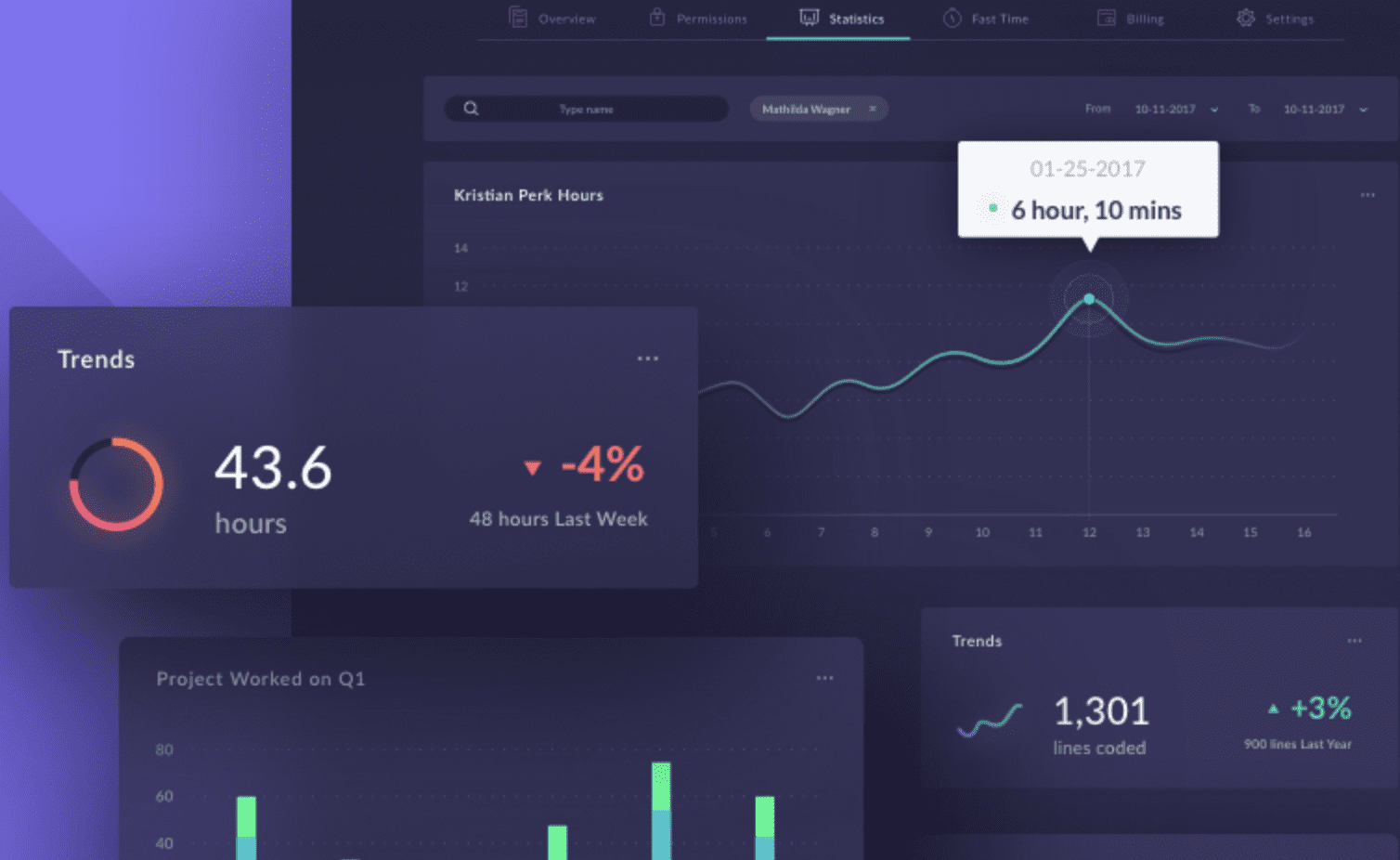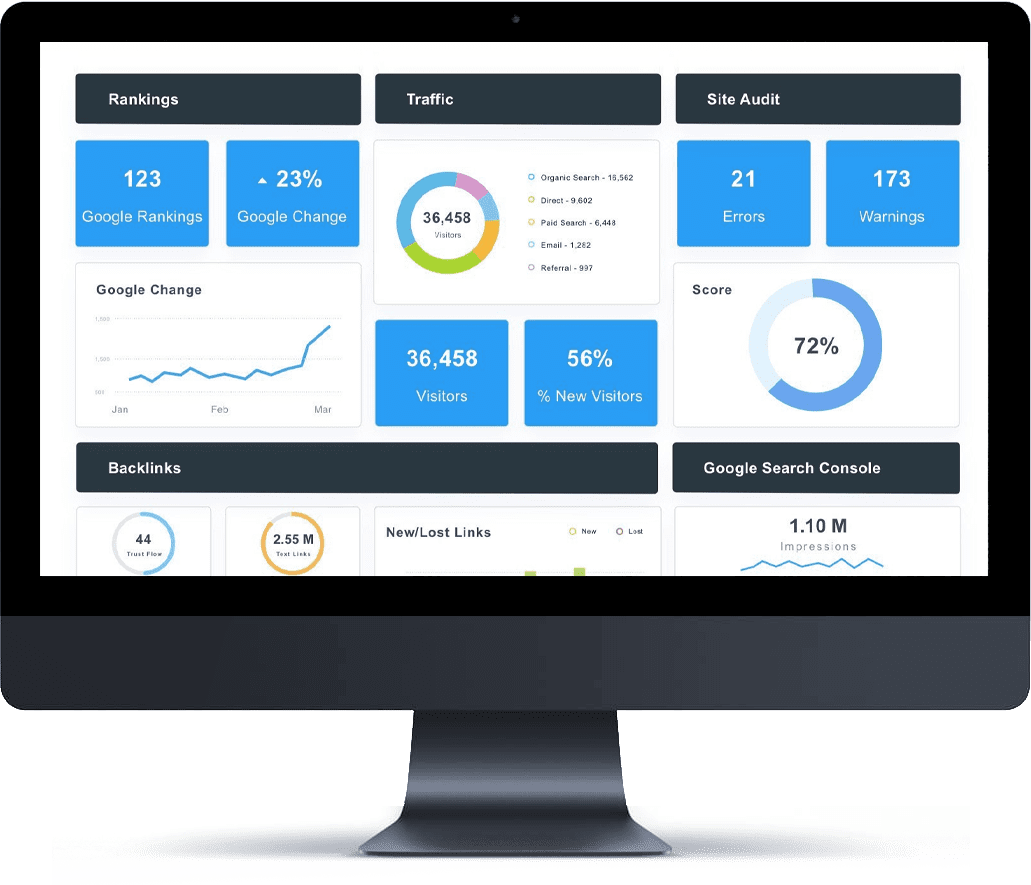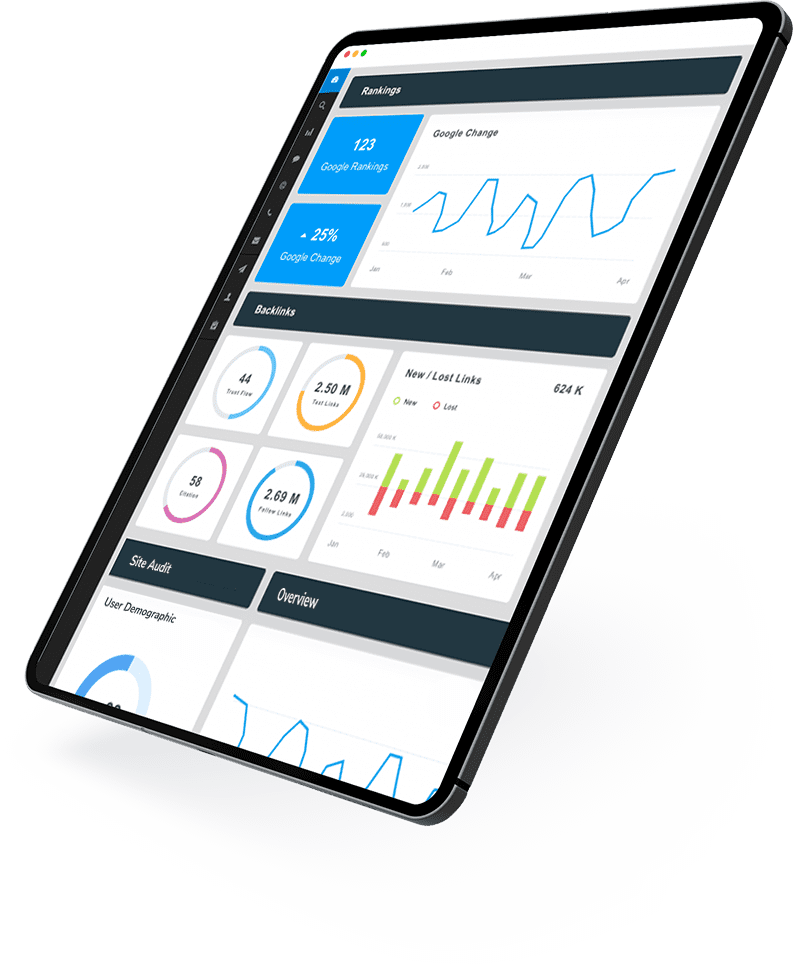
Marketing Analytics & Measurement 101

Marketing analytics are the key metrics that tell you how your content is performing such as Google Ads, email newsletters, and blog posts. It’s important that you know what to look at and how to measure them properly in order to make sure your campaigns are performing the best they can. Take a look at what you should know.
Types of Analytics
Marketing Analytics is a powerful tool that helps businesses track, measure and analyze marketing performance and improve decision-making. The most commonly used tools for marketing analytics are web analytics, social media analytics, and search engine optimization analytics.
Web Analytics: Web analytics tools, such as Google Analytics, can help measure website performance, track visitor behavior, and monitor website traffic sources. By understanding how users navigate through the site and what they interact with, businesses can optimize their website for improved user experience and higher conversion rates.
Social Media Analytics: Social media analytics help track social media engagement, brand reputation, and sentiment. Businesses can monitor and analyze their social media performance to identify what is working and what is not and adjust their social media strategy accordingly. To track performance, you can use platforms like Facebook Insights and HootSuite.
Search Engine Optimization (SEO) Analytics: SEO analytics help track website rankings, traffic, and user behavior on search engines. By analyzing this data, businesses can improve their SEO strategy and boost their website’s visibility on search engines.

Major Categories of Metrics
Along with understanding the various types of analytics and tools you can implement, it’s important to understand the major categories of metrics and what each one means. Let’s break it down.
Foundational Metrics
These are website metrics that tools like Google Analytics will show you a snapshot of:
- Sessions: The group of interactions a user performs on our website within a certain time frame.
- Users: The number of visitors who have visited your website at least once.
- New Users: This shows the number of first-time users.
- Page Views: The total number of pages viewed by users.
- Average Session Duration: The average length of time someone spends on your website.
- Bounce Rate: This is the percentage of visitors who navigate away from your website after viewing only one page.
- Conversion Rate: This indicates the percentage of users that completed a goal/event such as filling out a form.
SEO Metrics
To monitor who effective your search engine optimization strategies are, you can review the following metrics:
- Organic Traffic: This comes from your Search Engine Result Page (SERPs) results and GBP interactions. To further understand where your traffic is coming from, you can take a look at the traffic by location, the type of device, and which pages they’re spending the most time on.
- Keyword Ranking: This is how well your website or web pages are ranking in SERPs for relevant or targeted keyword phrases.
- Organic Conversion Rate: This is the number of users that landed in your website through organic search and completed a desired goal/event.
Paid Ads Metrics
When you’re spending your marketing dollars on paid advertising such as Google Ads or Facebook Ads, you’ll want to ensure that you’re reaching customers who are interested in or looking for your products or services. Here are the four paid ad metrics you should be monitoring:
- Click Through Rate: This is the percentage of users that clicked on your ad to the number of times it was viewed.
- Cost Per Click: This is the money spent to generate each click.
- Conversion Rate: This is the number of users who completed a desired goal after clicking on your ad.
- Cost Per Conversion: This measures the amount of money spent to complete one conversion, divided by the total number spent on conversions.

Social Media Metrics
In order to grow your business’s social media following, it’s key to know what content works best for your audience. Here are the three key metrics you should focus on:
- Social Media Engagement: This measures how your content is being received and includes things like post likes, comments, and shares.
- Audience Growth: This shows how quickly your following is increasing on any given platform.
- Social Media Traffic: This is the traffic to your website generated from your social media accounts.
Let JLB Help You with Your Marketing Efforts
If you’re looking for a team of industry experts to provide you with the latest resources that will take your business to the next level, then outsourcing your marketing needs might be the right move for your business. At JLB we provide “business-class” web design services, SEO, and digital marketing all in-house with full support. We can help your business define your perfect target market and provide your customer base with the right resources.
Contact us today to learn more about our services.


Have A Project For Us?
Website design services & digital marketing tailored for user experience and
attracting the right traffic for you with support-that-matters!



